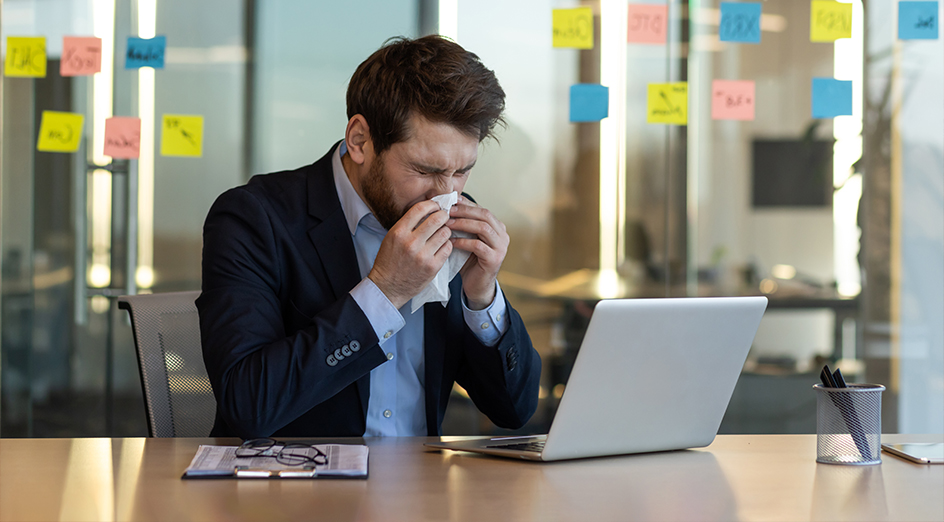1. Insect population faces ‘catastrophic collapse’

A comprehensive review of 73 historical reports on insect population declines from around the world sent shockwaves globally: up to 40 per cent of insect species could face extinction over the next century. It was dubbed the ‘insectageddon’.
Author Dr Francisco Sanchez-Bayo, an honorary associate in the , said: “If we destroy the basis of the ecosystem, which are the insects, then we destroy all the other animals that rely on them for a food source.”
He said agricultural practices needed a radical overhaul, in particular a serious reduction in pesticide usage and its substitution with more sustainable, ecologically based practices.
The paper, published in and written by an international team, was ranked Number 13 in the for 2019.
.
2. Perchance to dream: impact of dementia on our wandering minds

Associate Professor Muireann Irish.
In her studies to better understand the inner lives of people living with dementia, discovered that those living with frontotemporal dementia are not ‘lost in their thoughts’ but are stuck in the moment, losing their ability to daydream.
Her study showed that people living with this type of dementia – which tends to be early-onset – lose their capacity for daydreaming and lack an inner monologue.
The impact can be devastating for family members as changes in personality can be profound. Associate Professor Irish from the and hopes her research will help sufferers, clinicians and family members better manage the disease.
.
3. World’s biggest bee rediscovered in Indonesia
Wallace’s bee rediscovered
Last seen in 1981 and thought lost to science, a team of scientists and conservationists, including Honorary Professor Simon Robson, found the world’s largest bee, Megachile pluto, in the forests of Indonesia.
Honorary Professor Robson from the said: “Amid such a well-documented global decline in insect diversity it’s wonderful to discover this iconic species is still hanging on.”
The bee is named after Alfred Russel Wallace, the co-discoverer alongside Charles Darwin of the theory of evolution through natural selection. Wallace, a British entomologist, discovered the giant bee exploring the Indonesian island of Bacan in 1858.
.
4. Using code to reduce errors in quantum computers

IBM’s quantum computer. Photo: Graham Carlow/IBM
Scientists for the first time demonstrated improvement in quantum computers by using codes designed to detect and discard errors in the logic gates of such machines.
“This is really the first time that the promised benefit for quantum logic gates from theory has been realised in an actual quantum machine,” said , lead author of the paper published in the prestigious journal, .
Quantum logic gates are formed by entangled networks of a small number of quantum bits, or qubits. They are the switches that allow quantum computers to run algorithms, or recipes, to process information and perform calculations.
Dr Harper and his colleague , from and the , used to test error detection codes. They demonstrated an order of magnitude improvement in reducing infidelity, or error rates, in quantum logic gates, the switches that will one day form the basis of fully functioning quantum computers.
.
5. World’s oldest semen still viable
Under the microscope
Sheep semen stored since 1968 in a University of Sydney laboratory was been defrosted and successfully used to impregnate 34 Merino ewes, with the resulting live birth rate as high sperm frozen for just 12 months.
“This demonstrates the clear viability of long-term frozen storage of semen. The results show that fertility is maintained despite 50 years of frozen storage in liquid nitrogen,” said from the and at the University of Sydney.
The results are part of a long tradition at the University of Sydney in animal reproduction research. The original semen samples were donated in the 1960s from sires owned by the Walker family. Those samples, frozen in 1968 by Dr Steven Salamon, came from four rams owned by the Walkers on their then property at Ledgworth.
.
6. Which came first, the lizard or the egg?

A three-toad skink hatching. Photo: Nadav Pezaro
Scientists have never before witnessed the birth of live young and the laying of eggs from the same pregnancy. Until now. This world-first observation by provides a fertile area for research into the evolution of pregnancy.
The three-toed skink (Saiphos equalis) is one of only a handful of rare “bimodally reproductive” species, in which some individuals lay eggs and others give birth to live babies. But up until this study, no vertebrate had ever been observed to do both in one litter.
“It is a very unusual discovery,” said Dr Camilla Whittington, from the and .
.
7. Antidote to deadly box jellyfish sting discovered
A team of pain researchers led by studied the most venomous creature on earth to learn how venom works and what causes pain. In doing so, they uncovered an antidote for the venom effective on human cells and tested on mice.
The Australian box jellyfish (Chironex fleckeri) carries enough venom to kill more than 60 humans.
“Using CRISPR genome-editing techniques we could quickly identify how this venom kills human cells. Luckily, there was already a drug that could act on the pathway the venom uses to kill cells, and when we tried this drug as a venom antidote on mice, we found it could block the tissue scarring and pain related to jellyfish stings,” said Associate Professor Neely from the and .
.
8. Plastic recycling revolution heading to Timor-Leste
University spin-out company Licella will use catalytic technology developed by from and the as part of global consortium to donate plastics recycling plant to the people of Timor-Leste.
The Timor-Leste government signed a memorandum of understanding at the University of Sydney with Mura Technology for the development of a $US40 million chemical recycling plant that will allow Timor-Leste to become the first ‘plastics-neutral’ economy in the world.
The catalytic technology, Cat-HTR, breaks down polymer chains in end-of-life plastics and allows the constituent ingredients to be used for new plastics, biofuels, waxes, lubricants and other products.
Prime Minister Scott Morrison in his address to the UN General Assembly in September.
.
9. The violent past of our neighbouring galaxy Andromeda
A team of astronomers led by revealed two periods over billions of years where Andromeda shredded incoming galaxies to create star clusters. And our galaxy is next on the menu, in a few billion years’ time.
Their galactic detective work found Andromeda had eaten several smaller galaxies, likely within the last few billion years, with left-overs found in large streams of stars. The incoming galaxies came from two quite different directions.
“This is very weird and suggests that the extragalactic meals are fed from what’s known as the ‘cosmic web’ of matter that threads the universe,” said Professor Lewis from the and School of Physics.
“We’re going to have to think quite hard to unravel what this is telling us,” he said.
.
10. Saving Australia’s sea lions
A world-first trial is under way to treat the Australian sea lion with a topical anti-parasitic in an attempt to rid the endangered species of debilitating hookworm infestation. The experiment is led by Dr from the .
Dr Gray has discovered that ivermectin injected into the sea lions kills off the hookworm. The plan is to now find a non-invasive solution to the problem.
“Hookworm infects the intestines of 100 percent of the Australian sea lion pups, leaving them weak, anaemic and with blood in their faeces. Many pups die directly from the hookworm,” she said.
“Our trial uses a novel and minimally invasive treatment for hookworm in pinnipeds [fin-footed marine mammals], that we apply to the skin on the back of the neck, then monitor what effect it has on pup mortality.”
The research was the cover story of in November.
.
Keep up-to-date with science
See all our stories of the year at our . And get all the news next year by subscribing to our alerts .







